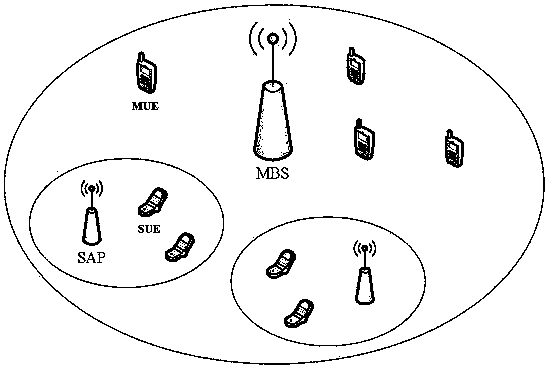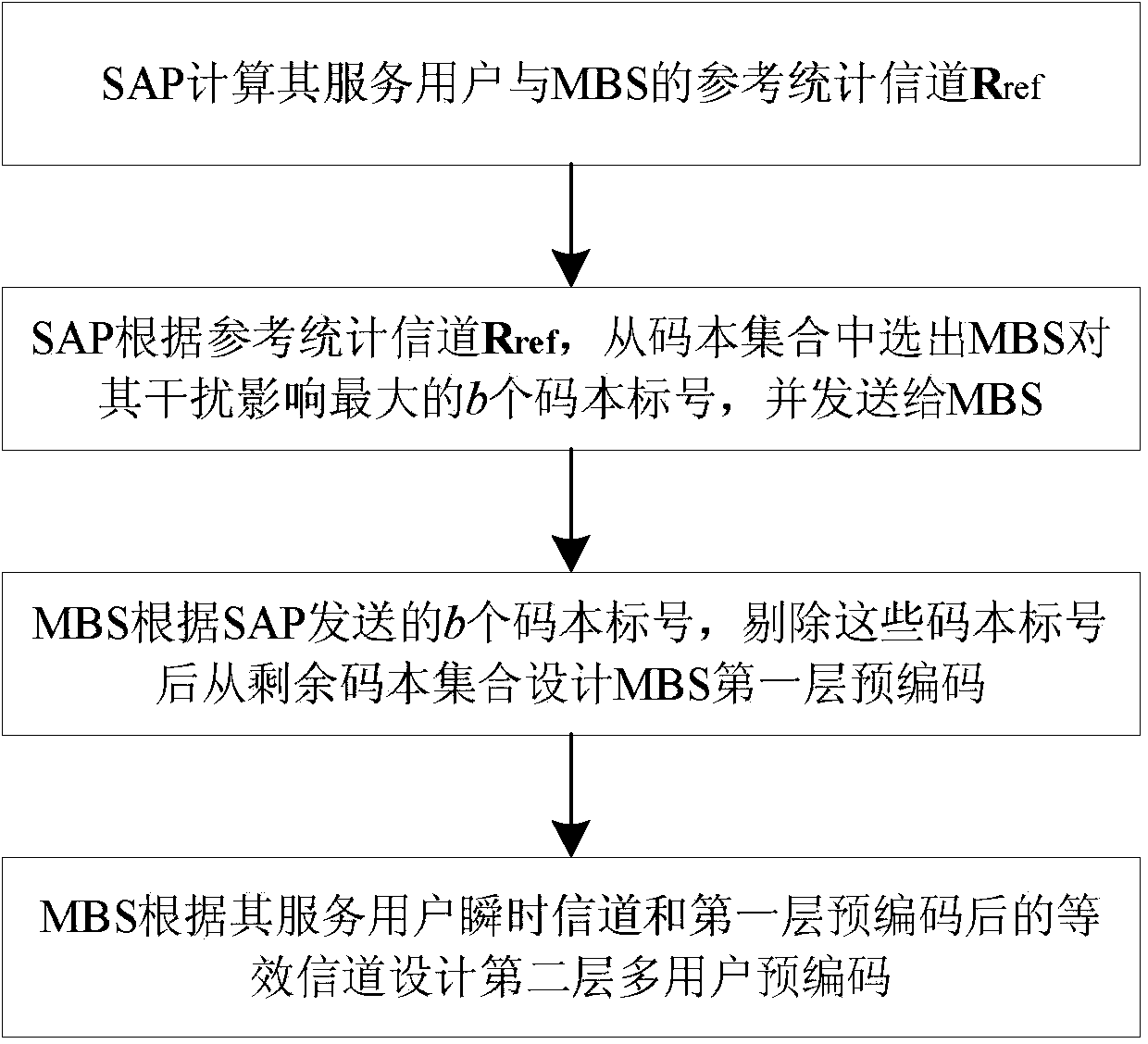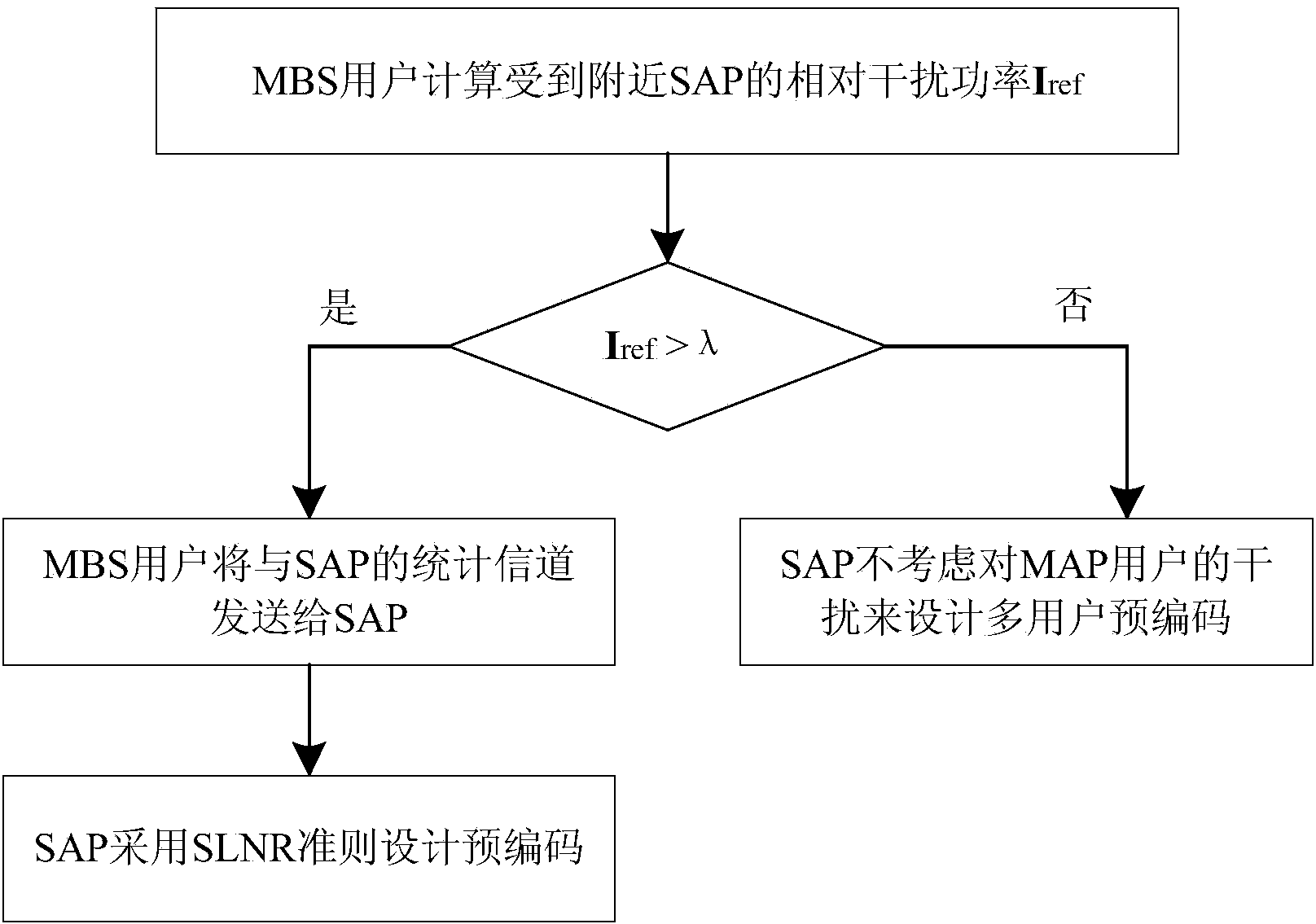Heterogeneous small cell space division interference collaborative method based on dynamically-closed beams
A space-division interference, small cell technology, applied in the directions of space transmit diversity, diversity/multi-antenna systems, etc., can solve the problems of channel characteristics change, difficulty in establishing high-speed and stable backhaul links, etc.
- Summary
- Abstract
- Description
- Claims
- Application Information
AI Technical Summary
Problems solved by technology
Method used
Image
Examples
Embodiment Construction
[0021] Below in conjunction with specific embodiments, the present invention will be further illustrated, and it should be understood that these embodiments are only used to illustrate the present invention and not to limit the scope of the present invention. The modifications all fall within the scope defined by the appended claims of this application.
[0022] Consider a downlink system scenario consisting of a macro base station (MBS) and K small cell base stations (SAP), including M macro base station serving users (MUE), M s SAP Service User (SUE) such as figure 1 shown. The number of MBS antennas is N t , the number of SAP antennas is N t_small , the number of user antennas is all 1, and the case of a single subcarrier is considered for simplicity, and other scenarios can be similarly promoted.
[0023] Consider spectrum multiplexing by MBS and SAP, that is, MBS and SAP will interfere with each other. Then the received signal vector y of the user MUE m and the rec...
PUM
 Login to View More
Login to View More Abstract
Description
Claims
Application Information
 Login to View More
Login to View More - R&D
- Intellectual Property
- Life Sciences
- Materials
- Tech Scout
- Unparalleled Data Quality
- Higher Quality Content
- 60% Fewer Hallucinations
Browse by: Latest US Patents, China's latest patents, Technical Efficacy Thesaurus, Application Domain, Technology Topic, Popular Technical Reports.
© 2025 PatSnap. All rights reserved.Legal|Privacy policy|Modern Slavery Act Transparency Statement|Sitemap|About US| Contact US: help@patsnap.com



